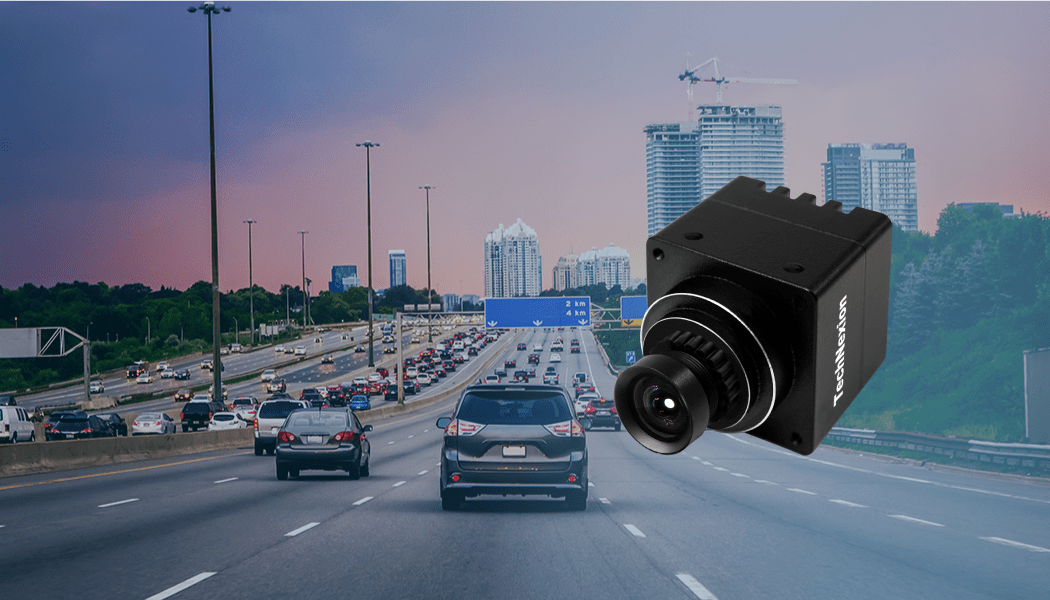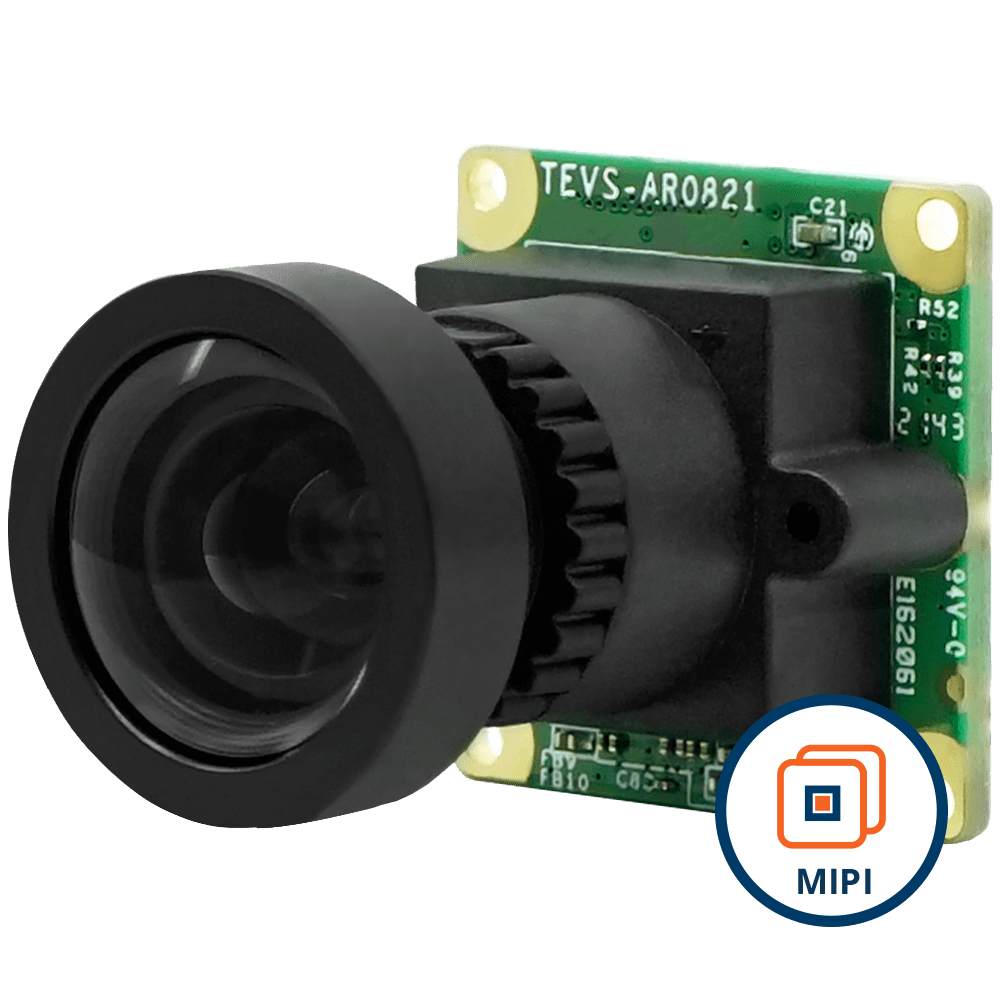Smart traffic systems are no longer a buzzword. With the sudden developments in AI (Artificial Intelligence), the possibilities of what a camera-enabled intelligent traffic management system can do are endless. These new-age devices have helped improve passenger & pedestrian safety, reduce the number of accidents, and enhance the overall conduct of traffic management across the world.
The application of artificial intelligence has also elevated the performance of smart traffic systems where cameras capture images and videos for AI algorithms to conduct various analyses to derive actionable insights. All these would not have been possible without the adoption of embedded vision in traffic management.
In this article, we explore:
- What is a smart traffic management system?
- What is a smart traffic camera and what are its functions in an intelligent traffic management system?
- How do cameras and AI algorithms work synchronously to power modern smart traffic devices?
- The key features of a smart traffic camera module.
- A few trends that will shape the future of smart traffic camera systems.
What is a Smart Traffic Management System?
A smart traffic management system refers to the combination of technologies and devices that together help reduce traffic congestion and improve passenger and vehicle safety. It leverages IoT (Internet of Things) sensors, embedded cameras, and smart lighting systems to capture, share, and analyze traffic information.
The data collected using all these devices are either analyzed manually or, in a larger number of cases fed into AI-based software to accomplish tasks such as automatically detecting vehicles, identifying lane deviations, and spotting traffic violations. This entire process makes traffic management easier for government traffic authorities by automating some of the tasks while improving the convenience of a few others.

Architecture of an Intelligent Traffic Management System
What is a Smart Traffic Camera?

Smart traffic cameras are the eyes of a smart traffic management system. They are installed in traffic junctions, streets, and tolls to capture images and videos of vehicles, passengers, and pedestrians. They help with the following:
- Counting vehicles and pedestrians.
- Identifying vehicles through automatic number plate recognition.
- Spotting traffic violations such as illegal lane use and speeding.
Depending on where the camera is installed, it could have different functions. For example, a smart traffic camera installed in a junction might be used for both vehicle and pedestrian counting. At the same time, a camera operating in a toll would be used for vehicle capture alone. Another example is a smart streetlight that switches on and off automatically by detecting the traffic in the street.
Smart Traffic Camera System vs. Smart Traffic Camera Module
This is often a topic of confusion, not just in the case of smart traffic systems, but embedded vision devices in general. A smart traffic camera system refers to the complete device used for traffic management – including the camera, mechanical enclosure, processing platform, software required for analysis, carrier board, etc.
On the other hand, a smart traffic camera module refers to only the camera component which is integrated into the overall system. While some manufacturers sell camera modules alone, TechNexion offers embedded cameras as well as system-on modules to help you build your dream smart traffic management device.
How Cameras and AI Work Together to Power New-age Smart Traffic Systems
Smart traffic camera systems earlier involved embedded cameras capturing images and videos as surveillance staff manually monitored them to ensure there were no traffic violations or undesired incidents. But that’s a thing of the past. Modern-day traffic management systems use AI and ML-based algorithms to analyze videos and images to intelligently perform tasks like vehicle identification, lane deviation detection, overspeed detection, etc.
An emerging and complex use case of AI-based smart traffic is facial recognition of the driver or passengers in a moving vehicle. Making this happen is a challenging endeavor for the following reasons:
- When vehicles move fast, effectively capturing a person’s face enough for AI algorithms to recognize the individual is challenging.
- Phenomena like glaring and shadowing stand in the way of producing clear images.
- The position of the passenger or things like a mask can prevent the camera from taking a complete image of the face.
With rapid advancements in camera technology and artificial intelligence, doing this with perfection could happen very shortly. Whatever the case is, no doubt embedded cameras and AI algorithms work hand in hand to make traffic management smarter and smoother.
Key Features of a Smart Traffic Camera Module
Selecting the right camera module for your smart traffic device requires meticulous analysis and evaluation. As in the case of other embedded vision devices, not every smart traffic camera is the same. Each system can have different needs in terms of camera features depending on its placement and the data types to be captured.
However, if we are to generalize, the following are the most important features you need to consider while evaluating a camera for your smart traffic management system:
- Resolution: In many cases, a resolution of Full HD should do the job. However, given that the life of a smart traffic device is 5 to 10 years, it has to meet the needs for such long a period. Hence, some smart traffic management system manufacturers demand much higher resolution, such as 4K.
- Frame rate: Usually, any frame rate above 30 fps is considered high. But if the vehicles are moving fast, a frame rate of 60 fps or higher might be needed to avoid blurring in the output image. It is important to note here that the frame rate is limited by resolution and the bandwidth of the interface used.
- High dynamic range: This is non-negotiable in the majority of smart traffic devices because they have to operate under bright sunlight most of the time. If you use a normal camera in such a case, certain sections of the image might be washed out.
- NIR sensitivity: This is required if the smart traffic device is operating under a limited supply of light and IR illumination is used to avoid distracting drivers at night.
- Shutter type: Rolling shutter cameras meet the needs of most smart traffic systems. But if the objects to be captured move extremely fast, a global shutter camera is recommended to eliminate distortion.
- IR-cut filter: Since sunlight has radiations of all wavelengths, for better quality, it is recommended to cut off light in the IR (InfraRed) spectrum during the day. This is done using IR-cut filters. An alternative is to use an RGB-IR sensor that can separate the visible and IR channels.
- Zoom: Smart traffic cameras at times must zoom to capture necessary details (say a number plate). It can be achieved using mechanical lens movements (which is called optical zoom) or digital zoom.
- Interface: Smart traffic cameras do a lot of processing on the edge and hence platform cameras work the best for them. However, the MIPI interface (which is the most popular interface for ARM-based processors) can transmit data only up to 30 cm. For transferring large amounts of data in smart traffic systems over long distances, an interface like FPD Link or GMSL is recommended.
- Enclosure: Smart traffic systems are often exposed to the outdoor environment, increasing the probability of hardware damage. To prevent this, a camera with an IP-rated enclosure is recommended. For high levels of protection, it is better to go with an enclosure of IP66 or above.
Camera-enabled Smart Traffic Management – What the Future Looks Like
AI-enabled smart traffic cameras which once used to be a thing of the future have become a reality now in countries across the world including the US, UK, China, Sweden, Netherlands, Denmark, and India. With improving camera technology and AI models, we are only going to see the adoption increase in the coming days.
In addition to AI algorithms and cameras getting smarter, here are a few trends in camera-enabled smart traffic management that could shape the future:
- Smart traffic cameras will become more connected with other ITS devices like air quality sensors, temperature sensors, and smart streetlights.
- Processors will improve AI performance, offering the ability to process larger amounts of data on the edge.
- Newer ISPs (Image Signal Processors) that support camera features needed for smart traffic management systems – such as HDR – will hit the market.
- 4K HDR cameras in traffic management will become a norm than a ‘good-to-have’.
The future of AI smart traffic cameras looks bright with more and more companies entering the space. This also creates a healthy competitive environment and encourages everyone to come up with cutting-edge features and innovations.
TechNexion : Building Camera Modules for Modern Intelligent Traffic Management Systems
The smart city revolution has accelerated the need for smart traffic management solutions. TechNexion is one of the earliest to identify this trend. We have developed camera solutions that fit the needs of even the most modern traffic management systems. Some of the key features of our embedded camera products for smart traffic include:
- High resolutions, up to 13 MP
- High dynamic range
- NIR sensitivity
- Support for AI processors such as NVIDIA Jetson and TI Jacinto TDA4VM
- Interchangeable lenses with S Mount and C Mount
Our engineers also work closely with our customers to make any necessary hardware and software modifications to our products to ensure they fit the needs of the end application. To view all our embedded camera solutions, visit the embedded vision page.
Related Products
- What is a Smart Traffic Management System?
- What is a Smart Traffic Camera?
- Smart Traffic Camera System vs. Smart Traffic Camera Module
- How Cameras and AI Work Together to Power New-age Smart Traffic Systems
- Key Features of a Smart Traffic Camera Module
- Camera-enabled Smart Traffic Management â What the Future Looks Like
- TechNexion : Building Camera Modules for Modern Intelligent Traffic Management Systems
- Related Products



